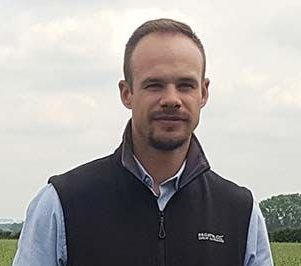The AHDB soil health scorecard – which measures soil organic matter, pH, nutrients (phosphorus, potassium, magnesium), soil structure through a visual evaluation and biology through an earthworm count-is a starting point for many.
However, he says you need to go a bit deeper to get a proper understanding of soils, which are very complex.
“It comes down to looking at the physical, biological and chemical aspect of soils in as much depth as is affordable and practical.”

Ed Brown, bioagriecologist
Physical test
He says the physical bit has to be bolted on to whatever lab tests farmers do by digging a hole and assessing soil structure and counting worms, etc. “It’s important to do that and not rely on one lab test to assess soil health.”
For carbon, he has used both loss on ignition and dry combustion.
“Dry combustion (Dumas) is a better measure of carbon, but I’m hesitant to deviate too much away from loss on ignition as it is the industry standard and if a farm has had tests done before it is usually loss on ignition so you have that to compare.” He tries to avoid converting the results back to carbon as it is a variable test anyway.
“I’m currently doing some soil tests for new clients and will do both tests so we have a baseline for both.”
He is a big fan of the active carbon permanganate test and uses that to give an indication of the proportion of organic matter that is cycling nutrients and providing food for micro-organisms.
“It’s good as it is an indicator of the microbial activity level in the soil and how many nutrients you’re likely to have cycling at once.
“If you’re on a very light, low organic matter soil, but you’ve got a high active carbon, that’s telling you that you will have to feed that soil a lot of organic amendments to be able to raise that organic matter.”
The soil test Mr Brown uses splits up total and available phosphate. “If you have a lot of total phosphate and not much available, and your active carbon is low it’s a good indicator that your soils are biologically impacted because a good microbial population helps make phosphorus available. It’s a good tool and helps tie everything together.”